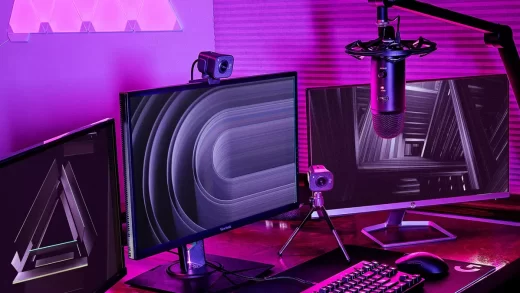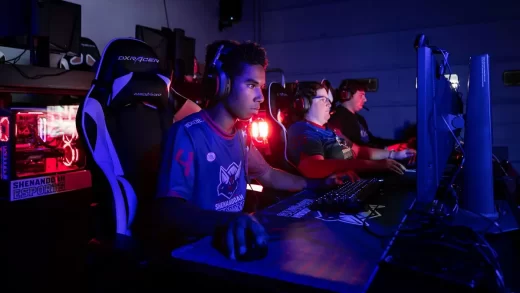In the fast-paced world of gaming, where innovation is the name of the game, one aspect has constantly evolved and left players awestruck – graphics. From humble beginnings to photorealistic masterpieces, this article delves into the fascinating journey of how gaming graphics have evolved over the years.
Table of Contents
- Introduction
- The Pioneering Years: 8-Bit Era
- From Pixels to Polygons: The Transition to 3D
- The Rise of High Definition: HD and Beyond
- Artistic Excellence: Visual Styles in Gaming
- Realism Redefined: Ray Tracing and Next-Gen Consoles
- The Impact of Graphics on Gameplay
- The Future of Gaming Graphics
- Balancing Act: Performance vs. Aesthetics
- Immersive Environments: Virtual Reality Graphics
- Mobile Gaming: Pocket-Sized Visual Marvels
- The Role of GPUs and Hardware Advancements
- The Art of Game Design: Graphics as a Storytelling Tool
- The Global Gaming Community and Graphics
- Conclusion
- Frequently Asked Questions (FAQs)
Introduction
Gaming has come a long way since its inception. Today, it’s not just about engaging gameplay and gripping narratives; it’s also about visual splendor that immerses players in alternate realities. The evolution of gaming graphics has been nothing short of remarkable, and this article will take you on a journey through its various phases.
The Pioneering Years: 8-Bit Era
The birth of gaming can be traced back to the 8-bit era when pixels ruled the screen. Games like “Pac-Man” and “Super Mario Bros.” may seem primitive by today’s standards, but they were groundbreaking in their time. These pixelated wonders laid the foundation for what was to come.
From Pixels to Polygons: The Transition to 3D
The 8-bit era gave way to 3D graphics, a monumental shift in gaming. Titles like “Super Mario 64” and “Tomb Raider” introduced players to a new dimension of gaming, offering expansive worlds and intricate designs that pushed the boundaries of what was possible.
The Rise of High Definition: HD and Beyond
With the advent of HD gaming, titles like “Halo” and “The Elder Scrolls: Skyrim” brought realism and detail to new heights. High-definition graphics set a new standard, making players feel like they were part of the action.
Artistic Excellence: Visual Styles in Gaming
Graphics aren’t just about realism; they’re also about artistry. Games like “Cuphead” and “Ori and the Blind Forest” showcase unique visual styles that are as captivating as they are innovative.
Realism Redefined: Ray Tracing and Next-Gen Consoles
The future of gaming graphics is marked by ray tracing, a technology that simulates the behavior of light. With the arrival of next-gen consoles, such as the PlayStation 5 and Xbox Series X, ray tracing promises to take realism to unprecedented levels.
The Impact of Graphics on Gameplay
Graphics aren’t just for show; they influence gameplay too. Games like “Dark Souls” use visuals to enhance the player’s experience, making the world feel alive and dangerous.
The Future of Gaming Graphics
What lies ahead for gaming graphics? With advancements in hardware and technology, the future holds the promise of even more stunning visuals and immersive experiences.
Balancing Act: Performance vs. Aesthetics
Developers face a constant challenge – balancing performance with aesthetics. Striking the right chord ensures that games run smoothly while looking visually stunning.
Immersive Environments: Virtual Reality Graphics
Virtual reality takes gaming to a whole new level. VR graphics transport players to worlds that feel almost tangible, blurring the line between reality and the virtual.
Mobile Gaming: Pocket-Sized Visual Marvels
Mobile gaming isn’t left behind in the graphics race. With smartphones becoming more powerful, mobile games are delivering stunning visuals right in the palm of your hand.
The Role of GPUs and Hardware Advancements
Behind every breathtaking visual is a powerful GPU. Hardware advancements play a pivotal role in pushing the boundaries of what’s possible in gaming graphics.
The Art of Game Design: Graphics as a Storytelling Tool
Graphics aren’t just eye candy; they can also convey emotions and tell stories. Games like “Journey” and “Inside” showcase how graphics can be used as a storytelling tool.
The Global Gaming Community and Graphics
The gaming community, united by a shared passion for graphics-intensive experiences, has become a global phenomenon, fostering camaraderie and competition alike.
Conclusion
In the world of gaming, the evolution of graphics has been a journey from simple pixels to breathtaking realism. As technology continues to advance, gamers can look forward to even more visually stunning and immersive experiences in the years to come.
Frequently Asked Questions (FAQs)
- Are better graphics essential for a better gaming experience?
- While graphics enhance the experience, gameplay and storytelling remain equally important.
- What role do GPUs play in gaming graphics?
- GPUs are crucial for rendering complex graphics and ensuring smooth gameplay.
- Can older games with pixelated graphics still be enjoyable?
- Absolutely! Nostalgia and gameplay often trump graphics.
- How does ray tracing improve gaming visuals?
- Ray tracing simulates how light interacts with objects, creating more realistic lighting and reflections.
- What’s the next big leap in gaming graphics technology?
- Virtual reality and augmented reality are expected to revolutionize gaming graphics in the near future.












